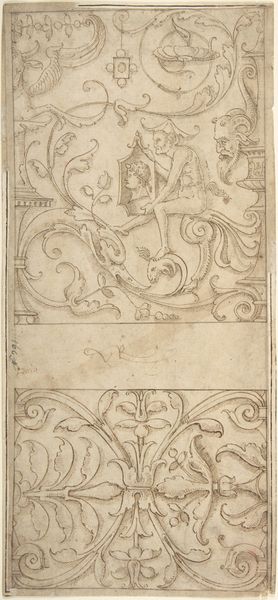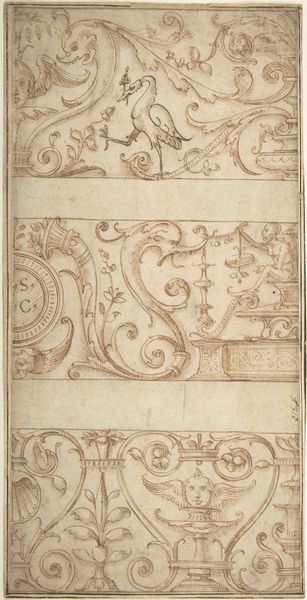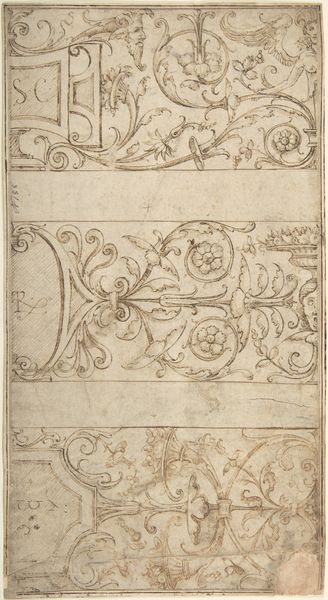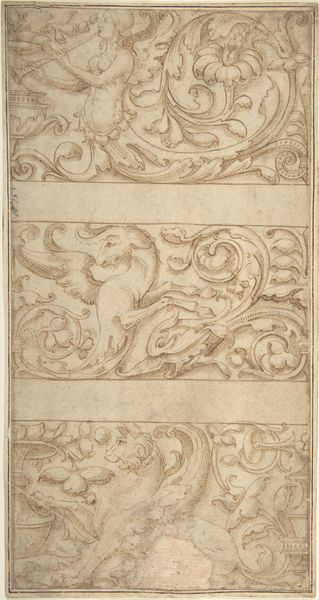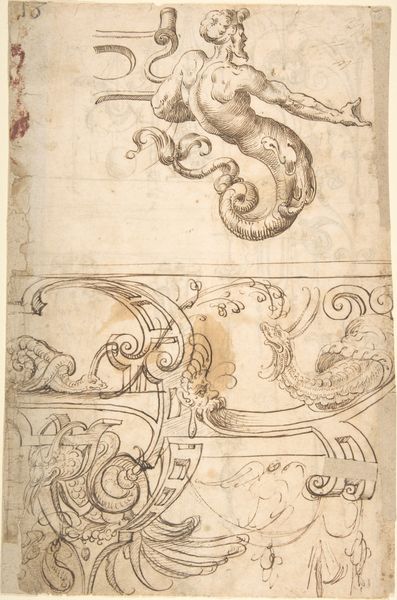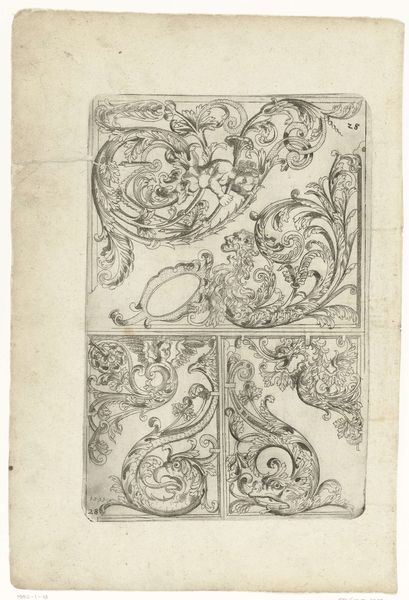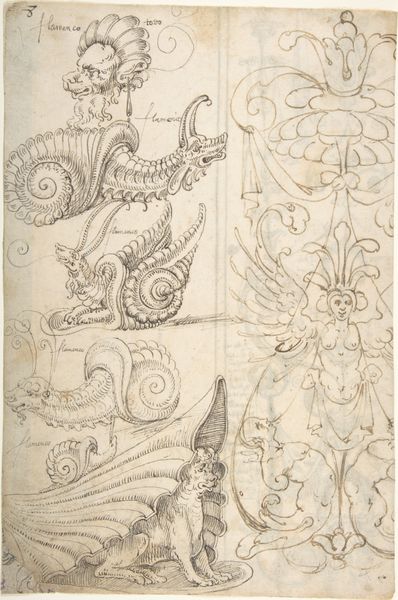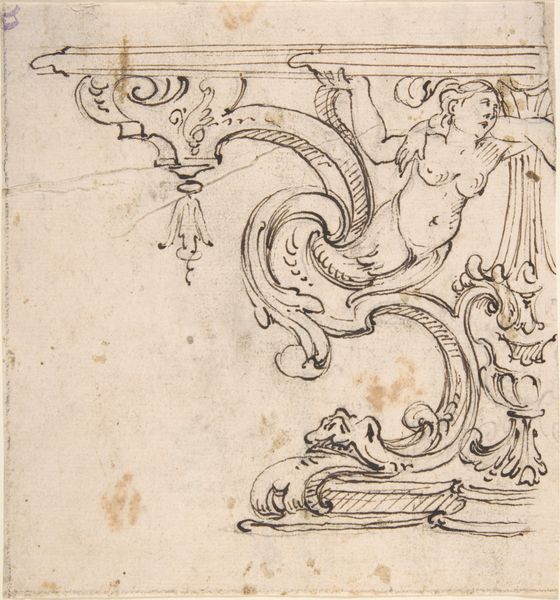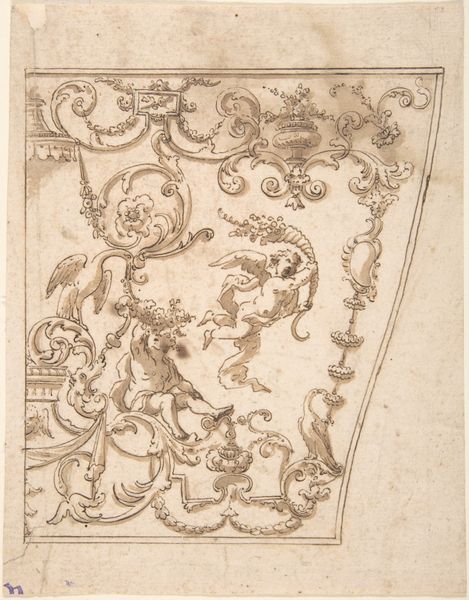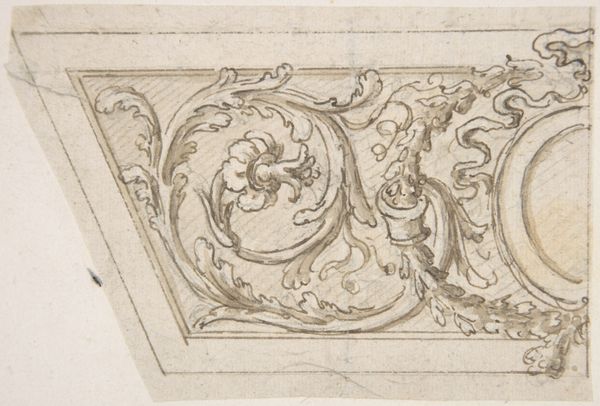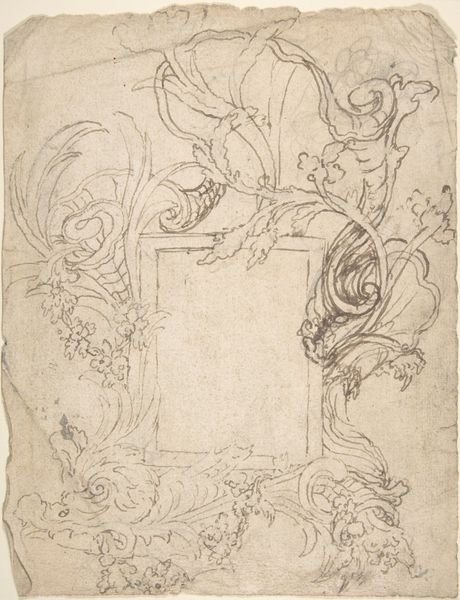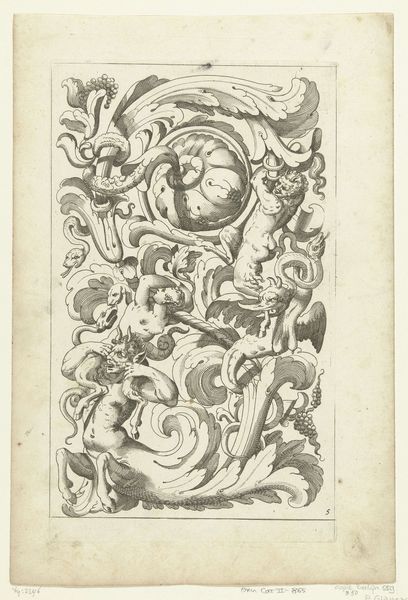
Antique-Style Ornamental Frieze Designs: Grotesques with Winged Infant, Masks, and Fantastic Animals 1500 - 1550
0:00
0:00
drawing, print
#
drawing
#
allegory
# print
#
figuration
#
11_renaissance
#
history-painting
#
watercolor
Dimensions: Overall: 13 1/2 x 6 1/2 in. (34.3 x 16.5 cm)
Copyright: Public Domain
Curator: Looking at this, I’m immediately struck by how playful it is. It feels light, almost whimsical, like a collection of doodles in the margins of a very important, very serious book. Editor: Indeed. This drawing, "Antique-Style Ornamental Frieze Designs: Grotesques with Winged Infant, Masks, and Fantastic Animals," dates back to somewhere between 1500 and 1550. We find it housed at the Metropolitan Museum of Art. It's rendered as a print, potentially a watercolor, by an anonymous artist. The material production of such ornament during the Renaissance points to its widespread use in decorative programs—think of the villas and public buildings being constructed. Curator: The "grotesque" label seems apt. The piece revels in the strange combinations of creatures and architectural fragments. It has such a fever dream quality. Like peering into someone’s wild imagination. Editor: These designs are not purely fantastical; they are steeped in the visual language of the antique, reborn during the Renaissance. The infant figure astride the sea creature, for example, merges Christian allegory with classical mythology. These friezes are also about displaying wealth and knowledge, signaling the owner’s connection to both the ancient world and contemporary power. Curator: I see it now – like a pattern ripped straight out of someone’s mental wallpaper, revealing this whole world of gods and beasts living underneath. It has such a living, breathing energy. Editor: Exactly. Ornament was never merely decoration. It carried meaning, reinforced social hierarchies, and ultimately, it transformed the spaces it inhabited, shaping how people experienced their world. Examining how these materials are manufactured and disseminated reveals cultural values surrounding luxury, power, and the imitation of antiquity. Curator: So much in a single line, quite literally! Looking closely, each little section seems a doorway into its own tiny myth. Thanks for pointing out what's in that wallpaper! Editor: And thank you for opening my eyes to the dreams that made them. It reminds us of the value to considering an artist's labor and the forces of consumption involved.
Comments
No comments
Be the first to comment and join the conversation on the ultimate creative platform.
